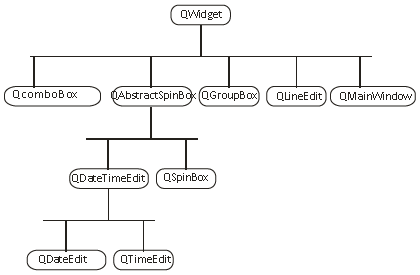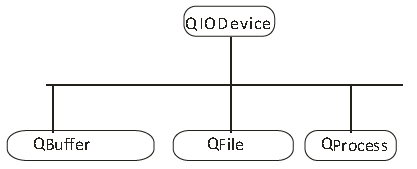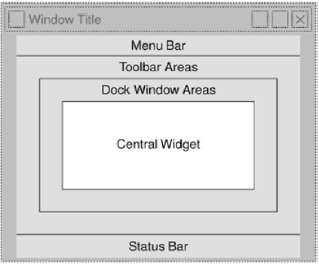PyQt API is a large collection of classes and methods. These
classes are defined in more than 20 modules. Following are some of the
frequently used modules −
QApplication class manages the main settings and control flow of a GUI application. It contains main event loop inside which events generated by window elements and other sources are processed and dispatched. It also handles system-wide and application-wide settings.
QWidget class, derived from QObject and QPaintDevice classes is the base class for all user interface objects. QDialog and QFrame classes are also derived from QWidget class. They have their own sub-class system.
Following diagrams depict some important classes in their hierarchy.




 Here is a select list of frequently used widgets −
Here is a select list of frequently used widgets −
A typical GUI based application’s top level window is created by QMainWindow
widget object. Some widgets as listed above take their appointed place
in this main window, while others are placed in the central widget area
using various layout managers.
The following diagram shows the QMainWindow framework −

QApplication class manages the main settings and control flow of a GUI application. It contains main event loop inside which events generated by window elements and other sources are processed and dispatched. It also handles system-wide and application-wide settings.
QWidget class, derived from QObject and QPaintDevice classes is the base class for all user interface objects. QDialog and QFrame classes are also derived from QWidget class. They have their own sub-class system.
Following diagrams depict some important classes in their hierarchy.




 Here is a select list of frequently used widgets −
Here is a select list of frequently used widgets −The following diagram shows the QMainWindow framework −


python training in bangalore | python online training
ReplyDeleteaws training in Bangalore | aws online trainin
artificial intelligence training in bangalore | artificial intelligence online training
machine training in bangalore | machine learning online training
data science training in bangalore | data science online training